Why do Japanese People Take off their Shoes when they Commit Suicide?
Why do Japanese People Take off their Shoes when they Commit Suicide?
Introduction
In Japanese dramas and anime, there are scenes in which a character takes his shoes off and commits suicide by throwing himself or herself. You may have questioned this. To conclude first, in reality, Japanese people do not necessarily take off their shoes and commit suicide by throwing themselves. This is not a reality.
In Japan, police dramas became popular in the 1980s. In the scene of suicide by throwing oneself in a drama, it was often directed to show after the fact of throwing, not the act of throwing itself. This is a pair of shoes arranged in the place where the person jumped off.
(C)2007竜騎士07/雛見沢御三家
However, this false staging has had a considerable impact on the real world. In reality, it is not unusual for people to take off their shoes and commit suicide. So it’s not wrong for you to ask the question, “Why do Japanese take off their shoes when they commit suicide?”
Therefore, from the perspective of Japanese customs, culture, and values, I will explain in detail the relationship between suicide by throwing oneself and the act of taking off the shoes. By reading this article, you will be able to understand why Japanese people accept the staging of taking off their shoes when they commit suicide.
© Magica Quartet / Aniplex – Madoka Movie Project Rebellion
1. The Japanese way of thinking about things
1.1. Hon-ne and Tatemae (True desire and feelings / publicly stated opinion)
In order to live, it is essential to have connections with others. However, there are physical and mental barriers between the two. In Japan, there are expressions such as Hon-ne and Tatemae. Hon-ne is to tell the other person honestly what you feel, and think. On the other hand, tatemae is not to tell the other person honestly, but to convey it to the other person with creative expressions. Tatemae is especially useful when you want to convey something inconvenient to others. This is used to keep the other person’s feelings calm. For example, one person might say to another, “It’s a unique fashion.” Behind the line, of course, is the real “It’s a lousy fashion.” Both, of course, know the meaning. This principle serves as a device to maintain the relationship between the two.
In a sense, Japanese people are two-faced and they use both aspects tactfully to maintain relationships with others. However, this is a unique style of communication in Japan, which often confuses people, especially those from foreign countries. Japanese people know that other meanings are hidden in Japanese words, so we can understand the other person’s true feelings. This is a unique Japanese culture that foreigners can hardly understand.
©武田綾乃・宝島社/『響け!』製作委員会
These images from “Sound! Euphonium1” show Aska and Kumiko of the brass band talking about the audition results of the contestants. When Kumiko asked Asuka about the validity of the audition results, Asuka replied, “I don’t care from the bottom of my heart.”. “I don’t know if Aska’s answer is Hon-ne or Tatemae.” Kumiko recalls to herself. Hon-ne and Tatemae fall into the category of common sense for high school students.
1.2. Mura-Syakai (village society)
Also, in Japan, there is a community-based society called Mura-Syakai. And Mura-Syakai has a characteristic of distinguishing the inside from the outside. The village respects the people who belong to it and protects their lives. Conversely, villages do not accept people from other areas. Even if someone from another area lives in the village, he will be isolated with no help from anyone. There is an invisible “wall.” In Japan, when we speak ill of others, we have the exclusive expression “He’s a stranger.” Another phrase is a “foreigner” This Japanese literally means “a person from another country” and is a completely different person from us. It’s a term that was developed a long time ago, but it has a negative connotation that it doesn’t accept strangers (Of course, the word is not used for this purpose in modern times, but it should be noted that the word is fundamental to the culture of the country.).
(C)2007竜騎士07/雛見沢御三家
These images from “When They Cry / When They Cry: Kai” are masterpieces of animation that take advantage of the characteristics of the Japanese village society. Some fools consider it an old and bizarre animation, but it takes the closed feeling of Japan into account. It is a full-length animation with nearly 50 episodes, but be sure to watch it because it is a masterpiece.
1.3. Read between the lines
In Japan, there are words that emphasize the relationship between you and your friends other than words that express the difference between you and others. It’s the word “Breathing of Aun.” The origin of the word is’ A ‘, which means the principle of creation of all things, and’ Un ‘, which means wisdom and virtue in which all things gather. From that, it means that you can understand each other’s actions and thoughts without words while breathing in the same rhythm. In particular, it is a common expression used to praise the playing of harmony within a sports team. This kind of expression is not often used in foreign countries. In particular, in American and English societies, it is important for speakers to convey information. As Japanese, the feeling that a listener reads between the lines of a spoken word is not mainstream. The global standard is that the listener cannot understand ideas other than the speaker’s information. Japanese living in the United States sometimes tries to communicate by omitting words even when they are speaking English, thinking that they will be understood by the audience. This is one of the reasons why the Japanese way of communication is insufficient. This is also related to the fact that Japanese is the language that omits the subject. For example, the Japanese expression of “I’m hungry.” has no subject. However, from what the speaker says, the listener automatically supplements the subject and understands what he says. This is one of the characteristics of the Japanese language and the basis of Japanese communication techniques. Japanese people can see invisible words and can read unwritten words.
©2018 鴨志田 一/KADOKAWA アスキー・メディアワークス/青ブタ Project
These images from “Rascal Does Not Dream of Bunny Girl Senpai” are one of the most popular anime in Japan, featuring atmosphere reading as an episode. An entertainer Mai Sakurajima, who entered the school in the middle of the semester, does not talk to anyone and nobody talks to her. Because the human relations of the class are already established. In this situation, talking to Mai, an entertainer, will disrupt existing relationships. This is how to read the atmosphere (read between the lines) in Japan. Reading the atmosphere can sometimes lead to side effects, and the animation shows the subtleties of a mind trying to solve it head-on with fantasy elements.
1.4. Honorifics
There are honorifics in the Japanese language, and it is essential to use honorific expressions for superiors in the vertical society of Japan. This is true in both general and business societies. However, there are no honorific languages in English-speaking countries such as America. Even if they are older people, they often call each other by their first names. Of course, there are ways of expressing respect for others in English, but you just add words like “Please.” In that regard, there are so many honorifics in Japanese that even Japanese people find it difficult to use them. By using honorific expressions, you clarify the relationship between yourself and others: the hierarchical relationship. Also, honorific language is used for people who meet for the first time or people who are not close. This is a measure to establish a certain distance between yourself and the other party. As you know, Japanese personal space is not large. In this way, the Japanese language has the role of constructing an invisible wall (in both good and bad terms) between people.
©得能正太郎・芳文社/NEW GAME!!製作委員会
These images from “New Game!!” show a college student being interviewed for a job at a game company. Recruit will also be screened for proper use of honorifics (especially respectful or humble language) in job interviews. This scene depicts her sincerity and efforts to correctly use honorifics such as “御社” (おんしゃ, your company) which she is not usually familiar with.
2. Japanese Habit
2.1. Taking off your shoes in the house
In Japan, people sit on the floor or lay a futon on the floor, so taking off their shoes is also to keep the floor clean. Taking off shoes is a very common custom in Japanese daily life. When you enter a Japanese house and take off your shoes before entering the front door, it is a good manner in Japan to place your shoes outside the house.
© 黒田bb・芳文社/Aチャンネル委員会・MBS
These images from “A-Channel” show Tohru visiting her best friend Run’s house. This sequence of actions shows that she has good manners.
In East and Southeast Asia, people usually take off their shoes due to high temperatures and humidity. In Europe, however, taking off shoes in public is considered discouraging in some countries. In Turkey, as in Japan, the custom of taking off shoes from the religious viewpoint of not bringing impurity from outside has been established even now.
©TYPE-MOON・ufotable・FSNPC
These images from “Fate/stay night: Unlimited Blade Works” show Saver from England entering a school building with her shoes on. As you know, in Japanese schools, You need to change your shoes in the shoe cupboard. Now, isn’t the summoned Servant given worldly knowledge from the Holy Grail?
2.2. Taking off shoes in school buildings, hospitals, and shrines
In Japan, there is a shoe cupboard at the entrance of school buildings where students change into indoor shoes. Students also change into gym shoes in the gym. In addition, visitors should wear slippers in hospitals, especially in clinics. This is a common practice to keep the hospital clean.
(C)VisualArt’s/Key/翼人伝承会
These images from “Air” show the main character changing from shoes to slippers at a clinic. It is common in Japan to change shoes at these small clinics, not at large hospitals.
There is one caveat here. You must also take off your shoes when entering the shrine’s hall of worship, but you must not change the direction of your shoes (Don’t point your shoes outward.). This is to keep your butt from pointing at God and to keep your purified hands clean. If you put your shoes on the side of the temple, you can bow to God as soon as you put on your shoes when you leave. In this way, Japanese people often take off and put on their shoes not only at home but also in all kinds of situations.
2.3. The beginning of the habit of taking off your shoes
The Japanese started the custom of taking off their shoes around 300 B.C. to 100 B.C. At that time, the Japanese started farming and began to preserve rice fir in takayukashiki-souko (warehouse on stilts). The takayukashiki-souko was very airy and suited Japan’s hot and humid climate. Therefore, it was initially used as a food warehouse. However, at that time, food symbolized power in Japan, so the warehouse was also hallowed. So people took off their shoes because the warehouse was a sacred place. This is to prevent foreign impurities from being brought in.
As time passed, tatami mats and mattresses were created to cover the floor. As a result, people began to live in takayukashiki-souko, and at the same time, takayukashiki-souko became the origin of the main buildings of shrines. Therefore, the Japanese have long had the custom of taking off their shoes. The origin of this custom lies in the idea of distinguishing between inside and outside. In daily life, there are no physical barriers such as walls and doors, but at the point where the Japanese casually take off their shoes and walk, there is an invisible wall that distinguishes between inside and outside.
3. Japanese Culture
3.1. Japanese housing structure that encourages people to take off their shoes
Japanese tradition and culture have a great influence on Japanese architectural styles. Japanese houses have a system in which people take off their shoes before entering inside, which is the basis of the idea of separating the house from the outside world. On the other hand, in Europe and America, people enter houses from the outside world with their shoes on. In Europe and America, people have a sense that a house is an extension of the outside world. The sense of separating the house from the outside world is less in Europe and America than in Japan. Western houses use solid walls to separate private spaces. On the other hand, Japanese houses separate private spaces with partitions such as shoji and fusuma, which are not sturdy walls. Japan thinks that the partition of the space is enough with a calm mental wall rather than a strong physical wall.
©米澤穂信・角川書店/神山高校古典部OB会
This image from “Hyouka” shows two guests changing their shoes at the entrance. In traditional Japanese houses, the steps at the entrance are usually high. In modern Japan, such traditional houses are decreasing in number.
©かきふらい・芳文社/桜高軽音部
These images from “K-On!” is a scene where a resident prepares slippers for three guests at the entrance. This type of structure is common in modern Japanese dwellings, and the steps at the entrance are low. As you may know, the slippers are provided by her brilliant sister, Mui-chan.
<Agari – Kamachi (上がり框)>
There is Agari – Kamachi at the entrance of a Japanese house. Agari – Kamachi is a horizontal crosspiece between the earth floor at the entrance and the floor of the hallway or entrance hall inside the house. With this Agari – Kamachi, the corridor in the house is located higher than the earth floor. Interestingly, the expression for entering a house is “to go up to one’s house” in Japanese.
This physical step clearly shows that this is the place to take off shoes. This step also serves as a barometer of the relationship between residents and visitors. In other words, whether a resident brings a visitor home or not can create a sense of distance between the two at that time.
©武田綾乃・宝島社/『響け!』製作委員会
As shown in this image from “Sound! Euphonium2” , the steps of Agari – Kamachi is very high in a traditional Japanese house. When you go up there, be careful not to get your feet caught.
<Engawa (縁側)>
Engawa is one of the unique structures of Japanese-style houses and is a plate-like passage that extends from the edge of the house. Engawa is a place where people can feel the seasons and socialize. You can sit on Engawa without taking off your shoes. Or you can take off your shoes and sit on your heels or sit cross-legged at Engawa. This place corresponds to the boundary separating inside and outside.
(C)VisualArt’s/Key/翼人伝承会
These images are scenes from the masterpiece animation “Air”. With the summer sun shining, the mother and daughter are eating watermelons, playing card games and combing her hair on Engawa. Yes, it’s like a real mother and daughter, and it’s a very comforting sight.
Engawa, which blurs the distinction between inside and outside, is a convenient place for both residents and visitors. For example, if a resident doesn’t want a visitor to enter the house but the visitor wants to enter the house, chatting on Engawa keeps the relationship amicable and vague. The two of them chatting at Engawa may be smiling, but their ideas are perhaps opposite. But Engawa, neither inside nor outside, keeps their relationship intact.
©城平京・左有秀・彩崎廉/「絶園のテンペスト」製作委員会・MBS
These images from “Blast of Tempest” show the heroine Hakaze talking with the main character Yoshino in her hometown on Engawa. She has a secret love for him and he is hiding a secret from her. They have hidden feelings that they can’t easily share with others, but they both want to close the gap. In these cases, Engawa is the perfect place to drive their conversation forward on their shoes on.
<Fusuma / Shouji (襖 / 障子)>
Traditional Japanese houses have Japanese-style rooms with tatami mats, although in recent years, there are more Western-style houses than Japanese-style ones. The rooms are arranged side by side, and Fusuma is used as a partition of the rooms. Fusuma is a paper door that slides open. Fusuma is a unique architectural style in Japan. Since around 1200, Fusuma has been decorated and is called Shouji. The origin of Shouji comes from the meaning of blocking the wind and eyes. In Japanese houses, the size of the room can be changed freely thanks to Fusuma and Shouji, which are light and easy to move.
©Nitroplus/TYPE-MOON・ufotable・FZPC
The best way to find out about traditional Japanese houses is to look at the Emiya houses in the Fate series. These images from “Fate/Zero” show the Saver team setting up Emiya’s residence as a base of action for the Holy Grail War. Irisviel’s personal interest in seeing a Japanese residence is that his residence is a good place to go. But it doesn’t seem like a good place for her mission as a magician. This is because Japanese houses are so open that it is difficult to set up a magic workshop because the magical powers are scattered away. Irisviel also lamented that to Saver.
It’s important to note that since Fusuma and Shouji are made of paper and cloth, and they don’t have any physical protection or sound insulation. If you are a completely malicious person, you can easily peep into their room, steal and listen in. However, Japanese people do not consider visitors and others as bad people, so they manage their private space only with this paper and cloth walls. The idea here is that by not providing a physical partition, you are somehow connected to the other person. On the other hand, walls and doors in Western architecture are clearly defined and do not play an intermediate role. This can be a big difference between Japanese and Western architecture.
©古味直志/集英社・アニプレックス・シャフト・MBS
These images from “Nisekoi” provide a glimpse of Japanese camp schools. The girl’s room and the boy’s room are separated by Fusuma. Boys interested in girls naturally want to open a Fusuma made of paper only. However, it is important to understand that when you open a Fusuma door in a room with a girl, you have to pay for your eyesight.
<Noren (暖簾)>
Even if the rooms are connected, you can create a vaguely partitioned space by installing Noren. A simple example is the Noren at the kitchen entrance. This prevents the kitchen, a private space, from being seen from the dining room.
(C)イクニチャウダー/ピングループ
These images from “Penguindrum” tell you the general Japanese housing structure. If you walk in the front door and look at the back of the hallway, you’ll see a dining room, but like this image, Noren is set up so you can’t see inside the room. As Japanese dwellings have become more westernized in recent years, it is rare to see Noren, but quite a few people like Noren who has a Japanese taste.
If you run a restaurant or other business at home, Noren makes sure that people can’t see your private space from the public space. In this sense, Noren can be referred to as a shop curtain. But what’s interesting is that it doesn’t completely separate one space from another.
© 雨隠ギド・講談社/「甘々と稲妻」製作委員会
These images from “Sweetness and Lightning” shows the Iida family’s house, which serves as both a restaurant and residence. The right side of the image is a restaurant and the left side is a residence. Since the restaurant is good at Japanese cuisine, the structure of the house is also Japanese. Noren, a single piece of unreliable fabric that shrinks from “Distance between owner and customer” to “Distance between owner and acquaintance”.
If you completely block out public space and private space with walls, doors, etc., you end up sending a cold message from the residents to the people outside – “I only deal with you as a business.” In that sense, the cloth-made Noren is a convenient item that separates the public space from the private space, but also connects people in both spaces vaguely.
3.2. The Japanese concept of space from the perspective of taking off shoes
Traditional Japanese houses have high walls and gate doors, and the partition between the inside and outside is quite large. And there are many partitions inside. Tsuitate, Noren, Fusuma, Shouji and Byoubu – these dividers can be customized and it is easy to move them around. They do not function as physical walls but as mental walls.
©米澤穂信・角川書店/神山高校古典部OB会
These images from “Hyouka” also show the structure of traditional Japanese houses. In modern Japan, such Japanese houses are rarely seen in urban areas, but they can be seen in rural areas. However, there are not many Japanese houses in the grand mansion where Eru Chitanda, the daughter of a famous family, lives.
In this sense, the wall with the least physical function is Tsuitate. Tsuitate is a piece of furniture that people put up in a room and use as a partition or a blindfold. Tsuitate is short, slightly transparent and portable. Again, it’s easy for anyone to see the back of Tsuitate. However, Tsuitate does not completely prevent that. The relationship between Tsuitate’s owner and others is not as simple as black and white.
©2008 true tears製作委員会
There are various kinds of tsuitate, and wooden tsuitate is used in old Japanese houses as shown in this image from “True Tears”. The purpose of Tsuitate is to hide the inside (Right) from the outside (Left). But as you can see, it doesn’t completely block your view. Of course, it is possible to look inside by turning sideways, but the Japanese do not look inside because they recognize the invisible partition that extends from right to left of Tsuitate. This is where the Japanese spirit of concern comes into play.
Like the Japanese language, Japanese people tend to obscure relationships with others. Therefore, the spatial design, spatial understanding, and spatial sensitivity of the Japanese are ambiguous, and the Japanese do not draw a clear line. Unlike the United States and Europe, Japan creates an invisible space. And the Japanese see the boundaries of that invisible space. Therefore, the Japanese have special feelings when they cross the border.
©カラー/EVA製作委員会
A.T. Field (Full Name: Absolute Terror Field) in Neon Genesis Evangelion is the “wall of the heart” of every human being. Evangelion and Angels (Shito) operate this as an extremely defensive barrier.
3.3. The Japanese view of religion-related to taking off shoes
Do you understand a little about how Japanese people use space? It is interesting that the way of thinking is different from your country. Like Fusuma, Shouji, and Noren mentioned above, Japan can create partitions in a space with only one sheet of paper or cloth. Furthermore, you can separate spaces without using paper or cloth. An example is Torii in the shrine. Torii is a gate made of wood or stone without a door, and it is a barrier that indicates the entrance from the secular world where people live to the sacred world where gods live.
© 三月・KADOKAWA刊/ひなこのーと製作委員会
©Project GN/ガーリッシュ ナンバー製作委員会
©月眠/ステラ女学院保護者会
As shown in these images from “Hinako Note”, “Girlish Number”, and “Stella Women’s Academy High School Division Class C3”, torii vary in size. Japan’s largest torii is 33 meters high, with an average of about 10 ~ 15 meters and the smallest about 2 ~ 3 meters.
Of course, there is no physical interference when a person passes through Torii, but Torii has a psychological effect on the person passing through it. In other words, bypassing through Torii, people can get rid of impurities. So when you go through Torii, you have to take off your hat and bow. In this way, even in the wall of empty air, the Japanese find a partition between spaces and place spiritual importance on it.
©2017「月がきれい」製作委員会
Passing through the torii means going into the realm of God, so bowing as he does in the image from “Tsuki ga Kirei” and passing through the torii is the right behavior.
The Japanese are said to be ignorant of religion, but the sanctuary is also special for them. Therefore, when entering a shrine, which is a sacred area, the Japanese take off their shoes with impurities. The Japanese believe that God exists in the world of death. Therefore, taking off shoes with an impurity at the time of death (When you go to the world of God,) is consistent with the Japanese view of religion.
©Frontwing/Project GRISAIA
In the image from “The Fruit Of Grisaia”, she takes off her shoes before committing suicide. There is a will under the shoes. The number of suicides in Japan is about 20,000 ~ 30,000 a year, and the number of teenage suicides is about 500 a year. The number of suicides in Japan has been improving from a peak of 34,000 in 2003 to 20,000 in 2018.
4. Japanese Values
4.1. Importance of the rite of passage in Japan
Next, I will consider how the Japanese acknowledge the passage of time. There are four seasons in Japan. Along with that, there are events that mark the turning point. Spring in April has an entrance ceremony at the beginning of the year. When the cherry blossoms bloom, places to celebrate such as cherry blossom viewing are held all over the country. We have Obon in the summer of August, and it is the time to respect our ancestors. We have Christmas and New Year’s Eve in December and New Year’s Day in January. There are traditional events in Japan and events from the West throughout the year, but the passage of time is clearly distinguished throughout the year. Other events, such as Shichi-go-san, celebrate children’s growth and celebrate older people at certain ages. There are various rites of passage in Japan.
©2017「月がきれい」製作委員会
As you know, there are 4 seasons in Japan: spring with cherry blossoms in April-June, hot summer with strong sunlight in July-September, autumn with beautiful autumn leaves in October ~ December, and winter with snow in January ~ March. And if you watch Japanese anime, you know that Japan’s entrance season is April and graduation season is March.
<Shichi-go-san (七五三, Seven-Five-three)>
Shichi-go-san is an event where the parents of 3-year-old boys and girls, 5-year-old boys and 7-year-old girls visit a shrine on November 15 to celebrate the growth of their children. Children carry Chitose-Ame in their best clothes. And children visit shrines with their families and take pictures.
(C)VisualArt’s/Key/光坂高校演劇部
This image from “Clannad After Story” is a scene of Ushio’s parents celebrating her three-year-old growth. She looks like a boy, but she is a girl. Of course, you have watched one of the best Japanese anime: Clannad & Clannad After Story?
<Entrance ceremony, graduation ceremony, opening ceremony, closing ceremony>
The entrance ceremony is held for the new 1st grade students with concepts of “feeling the joy of enrollment”, “raising awareness as freshmen” or “creating hope and motivation in school life.” For the new 2nd and 6th graders, welcoming the new 1st grade students has the meaning of “raising awareness of being senior students.” The graduation ceremony is held with the same concept. A typical Japanese student experiences a total of 10 entrance and graduation ceremonies at kindergarten, elementary school, junior high school, high school, and university.
© 2011 宇仁田ゆみ / 祥伝社 / アニメ「うさぎドロップ」製作委員会
©武田綾乃・宝島社/『響け!』製作委員会
(C)原悠衣・芳文社/きんいろモザイク製作委員会
©かきふらい・芳文社/桜高軽音部
©竹宮ゆゆこ/アスキー・メディアワークス/おまけん
I would like to emphasize that these images are not exaggerated in Japan. I myself have experienced a total of 10 entrance and graduation ceremonies. In any case, Japan is a nation and culture that values the process called the rite of passage.
In addition to entrance and graduation ceremonies, there are also opening and closing ceremonies at the beginning and end of a semester. Since school life is typically divided into three terms, students experience the opening and closing ceremonies three times a year. Entrance ceremonies, graduation ceremonies, opening ceremonies, closing ceremonies, and school events are some of many rites of passage. In this way, the Japanese value various rites of passage at every juncture. Since these rites of passage are held in an event hall or a gymnasium (i.e. indoors), people naturally take off or change their shoes.
(C)鴨志田一/アスキー・メディアワークス/さくら荘製作委員会
©tari tari project
© 黒田bb・芳文社/Aチャンネル委員会・MBS
As shown in these images, the Japanese naturally learned the custom of taking off their shoes during the rite of passage from a young age. Unconsciously, the Japanese have become accustomed to taking off their shoes in important processes of life.
4.2. Japanese society that emphasizes processes
The decision-making process in Japanese companies is unique. In order to emphasize the consensus with the persons concerned, the ringi system (the typical Japanese way of making decisions through the medium of writing using a circular letter) is passed everywhere. It is well known that this is one of the weaknesses of Japanese companies in the global business that requires speed. In Japan, however, it is important to have the approval process function from the bottom up, such as the chief, unit chief, section chief, general manager, division general manager, executive officer, and president.
©城平京・左有秀・彩崎廉/「絶園のテンペスト」製作委員会・MBS
As shown in this image from “Blast of Tempest”, the ringi form has several columns for seals, and the seal is placed from the lowest rank to the highest rank. In the business world where speed is important, the ringi system is very silly, but in the Japanese corporate culture where the process is important, it is the most important system.
On the other hand, the custom of “Kejime” is deeply rooted in Japanese society. Kejime means taking responsibility for mistakes or making a distinction. I think you can already understand that Japan is a nation that separates various things. It is based on the changing nature (Four Seasons) and the awe and respect for nature. For this reason, taking Keijme tends to mean clarifying the responsibility by saying “I was wrong, I was wrong.” When someone says “Take your Kejime,” that could mean “Admit your mistakes and apologize.” However, unlike the United States and European countries, interestingly, an apology does not mean resignation or dismissal in Japan. The Japanese are tolerant of the person who takes Kejime (i.e. who apologizes). In business, the person apologizing is not required to be held responsible or financially compensated. The approval process is working, so it’s customary for the boss of the person who apologized to do so.
(C)2014 Project 2H
Naturally, in modern Japan, as these images from “Yuki Yuna is a Hero” show, there is a 0% chance that taking responsibility means committing seppuku. This image is a scene where Mimori Tougou verifies whether or not she can commit suicide in order to confirm a concern, and has nothing to do with Kejime. Excuse me.
The recent illegal tackle incident in the football club of Nihon University is the most comprehensible example. The player quickly acknowledged his responsibility and held a press conference to apologize in front of the nation. As a result, neither the media nor the public pursued his responsibility. With Kejime, he can still play football. However, the coach did not keep Kejime. They made their responsibilities ambiguous. As a result, the press and the public bashed them for not apologizing, and they ended up with the worst result of being fired from the university.
4.3. The essential concept of “Kejiime” in Japanese society
Here, I will explain how the concept of Kejime was born in Japan. From 1185 to 1333, seppuku was a standard method of suicide for samurai in Japan. Since the samurai regarded bravery as honor, seppuku was highly valued. Seppuku is very painful. It was a privilege and honor that only samurai who could take responsibility and die were allowed to commit suicide. This is the origin of the strongest Kejiime application. Since seppuku was an honorable act, samurai took off their shoes before committing seppuku so as not to bring impurities into the sacred place of death.
©山田芳裕・講談社/NHK・総合ビジョン
In the above period, Kejime meant seppuku (suicide by disembowelment). This was a historical fact in Japan and a very honorable act for samurai (The commoner was not allowed to commit seppuku.).
As mentioned above, the old values of “Kejime” are rooted in the way business is done in modern Japan. Japanese businessmen tend to put more emphasis on the processes than results. This is because people and companies are based on Japanese values. However, it is also noteworthy that in recent years, Japanese companies have followed the example of Europe and the United States and are shifting to focusing on results.
When the Japanese fail in their jobs, their bosses tell them that even ordinary employees take “Kejime.” This means that the person who has made a mistake will apologize in front of the people concerned. An apology gives him a chance to continue working. This is very different from the theory of responsibility in Europe and America. In the Japanese legal system, it is rare to be dismissed due to job failure.
This is very important for taking responsibility in Japanese business and for Kejime. The act of apology can lead to purification from the impurity of failure. He can continue working in the same office. In short, in Japanese society, taking Kejime allows you to move from the past to the future. Taking off your shoes when you commit suicide means taking Kejime out of this world.
© 岡本倫/集英社・VAP・GENCO
In these images from “elfen lied”, after being abused by her family and despairing in her life, she says goodbye to this world. The reason she took off her shoes was to take Kejime from this world. In addition, this is a pure love animation. It’s not a grotesque animation. If you’re a geek, you know?
Summary
You understand that it is common for Japanese to take off their shoes. In Japan, the custom of taking off shoes at the timing of separating space and process is widely established. The idea of taking Kejime is fundamental, and it’s also etiquette.
Focusing on the process of moving from inside to outside and from life to death, taking off shoes at the time of suicide by throwing oneself is a behavior that is easily sympathized with Japanese sensitivity. By taking off his shoes, he wanted to purify himself.


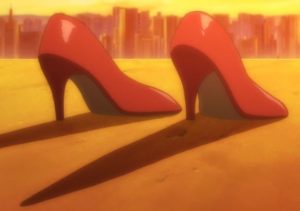


























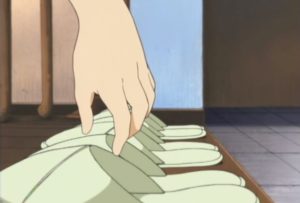
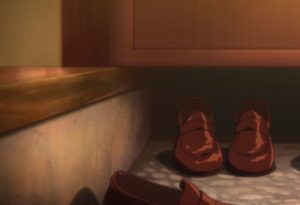







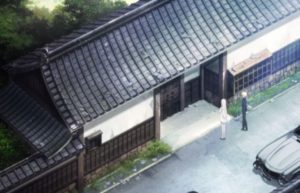

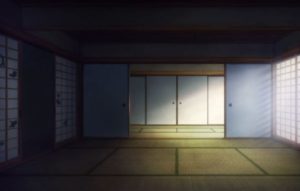

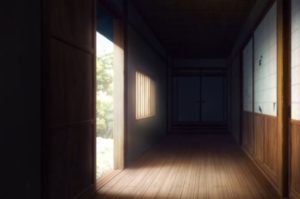

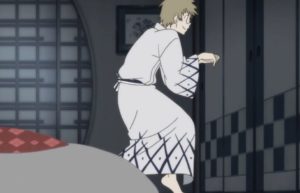




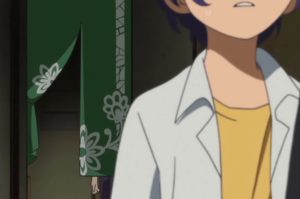
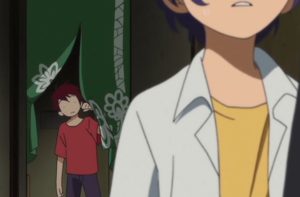





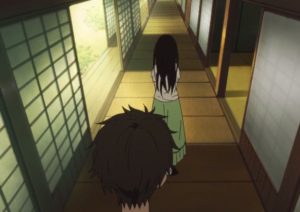
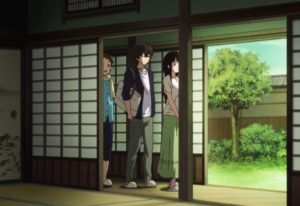

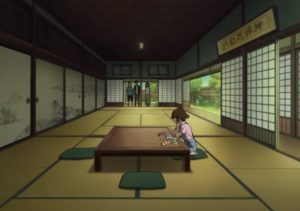
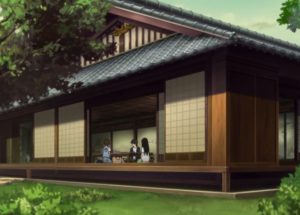
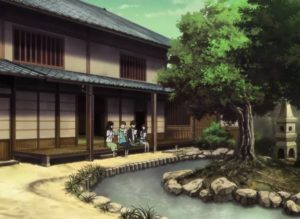
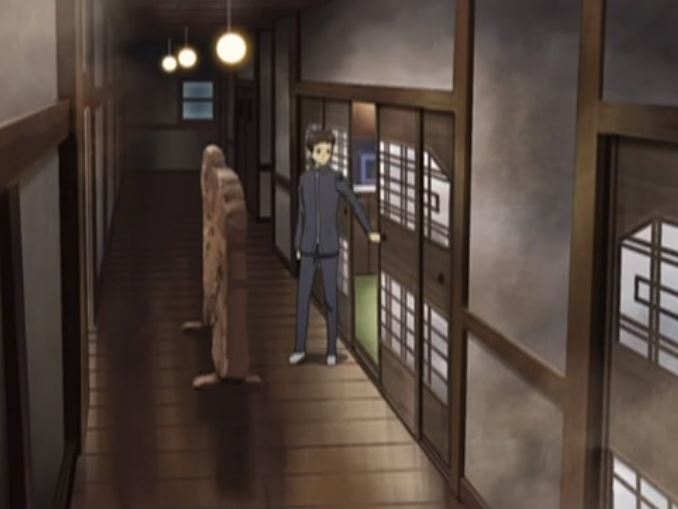




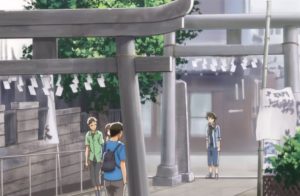
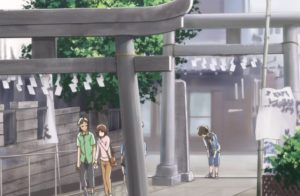
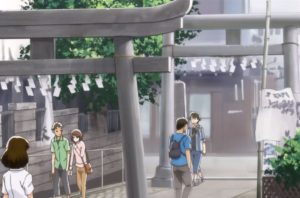


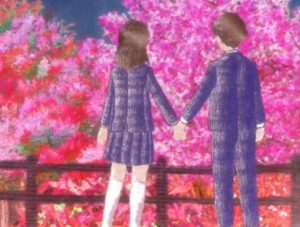
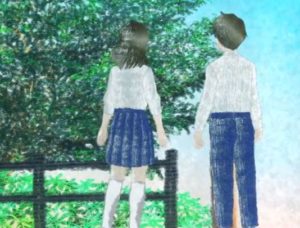

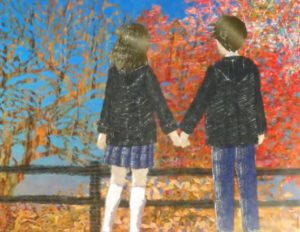
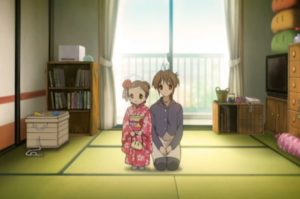



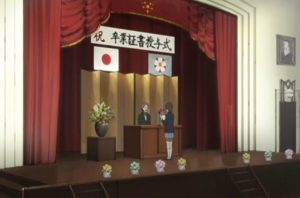





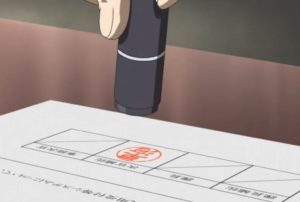








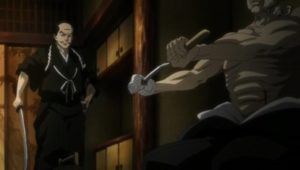






Thanks for the article. Really loved the research and the deep knowledge went into writing this article